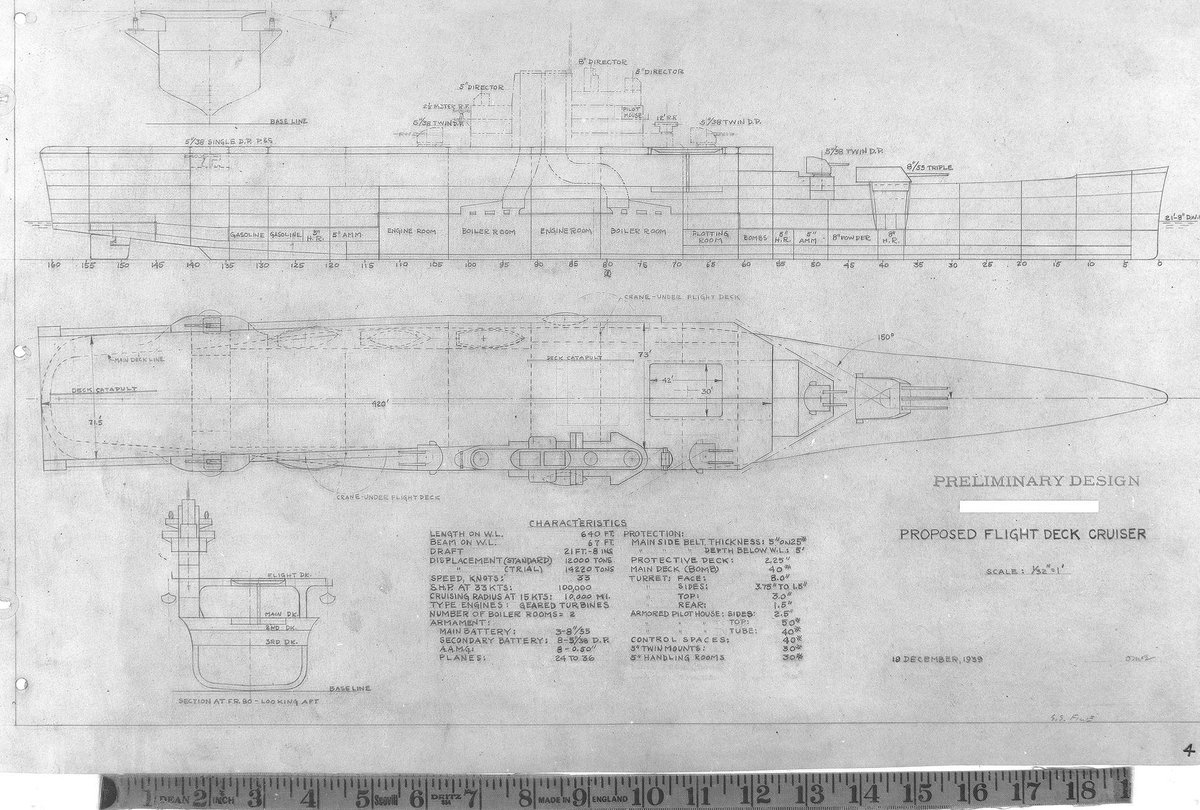Alright, the United States and its flight deck fantasies Part 1: The Flight Deck Cruisers
The Washington Naval Treaty, as well as the later London Naval treaties, were an incredible achievement for halting (temporarily) a growing naval arms race.
The Washington Naval Treaty, as well as the later London Naval treaties, were an incredible achievement for halting (temporarily) a growing naval arms race.

The German and Japanese navies are best known for their attempts to circumnavigate treaty restrictions. However, this does not mean other countries were playing by the rules.
The United States Navy was also looking for ways to circumnavigate treaty restrictions.
The United States Navy was also looking for ways to circumnavigate treaty restrictions.

One of the more notable attempts to do this was through hybrid cruiser-carriers. Cruiser-sized warships with a large flight deck and a cruiser-level armament.
Such warships were desired for a variety of reasons.
Such warships were desired for a variety of reasons.

1. The US Navy was well aware of the scouting ability of aircraft. Combining them on a fast warship equally capable of surface scounting was seen as advantageous.
In addition, should the ship be caught by enemy warships, it would retain the ability to defend itself.
In addition, should the ship be caught by enemy warships, it would retain the ability to defend itself.

2. Multiple smaller cruiser-carriers would be less vulnerable than one large fleet carrier. There was less likelihood of losing a substantial part of the air group in the event of a ship being sunk.
Multiple warships would also allow more ships to be deployed to multiple areas.
Multiple warships would also allow more ships to be deployed to multiple areas.

3. The final reason, and the most important, was that such a warship was not subject to the carrier restrictions in the Washington Naval Treaty.
In theory, the US Navy could build as many cruiser-carriers as they wanted as the ships were considered to be cruisers.
In theory, the US Navy could build as many cruiser-carriers as they wanted as the ships were considered to be cruisers.

Thus from the late 1920s until the Second World War, the United States investigated several of these cruiser-carriers, designating them Flight Deck Cruisers. They were even given the special hull designation "CF". 

Earlier proposals were the largest and most impressive.
In 1930, one design mated the rear of a Wasp class carrier to the forward half of a Brooklyn class cruiser. The resulting ship was over 650' in length. 24x aircraft, 9x 6", and 8x 5" guns were carried.
In 1930, one design mated the rear of a Wasp class carrier to the forward half of a Brooklyn class cruiser. The resulting ship was over 650' in length. 24x aircraft, 9x 6", and 8x 5" guns were carried.

By the late 1930s, the Flight Deck Cruisers started to shift focus onto the aviation aspect. Two 12,000 ton cruisers were designed in 1939.
Both were armed with three 8" guns in a single triple turret forward. Secondary armament was eight dual-purpose 5" guns.
Both were armed with three 8" guns in a single triple turret forward. Secondary armament was eight dual-purpose 5" guns.

The difference was the arrangement of the secondary battery. Both ships were armored comparable to other cruisers and could steam at 32-33 knots.
Both Flight Deck Crusiers were estimated to carry between 24 and 36 aircraft.
Both Flight Deck Crusiers were estimated to carry between 24 and 36 aircraft.

The last flight deck cruiser proposed was in 1940. This design was slightly heavier than the previous ships, trading the triple 8" turret for two triple 6" turrets mounted, one mounted forward and the other aft. Only four 5" dual-purpose guns were carried. 

The additional main battery guns were achieved at the expense of a shorter flight deck. However, it was somehow still estimated that up to 36 bombers could be carried. Performance was similar to the 1939 designs. 

Despite the considerable interest in the ships, they remained designs only.
It was determined that the flight deck cruisers would fulfill neither role well at their displacement. The concept was shelved though not abandoned.
It was determined that the flight deck cruisers would fulfill neither role well at their displacement. The concept was shelved though not abandoned.
It was only at the start of WW2 that the concept was abandoned for good (From a certain point of view, more on that later).
With a breakdown in treaty restrictions, the US Navy could simply pump out a deluge of more capable carriers. And so they did.
With a breakdown in treaty restrictions, the US Navy could simply pump out a deluge of more capable carriers. And so they did.

But the US Navy loved flight decks and aviation. Cruisers were but one type of warship they considered slapping a flight deck on. We will look at some other projects over the next series of posts. Stay tuned!
#USNavy #wednesdaythought #tuesdaymotivations #History #Navy #Military
#USNavy #wednesdaythought #tuesdaymotivations #History #Navy #Military

• • •
Missing some Tweet in this thread? You can try to
force a refresh






















